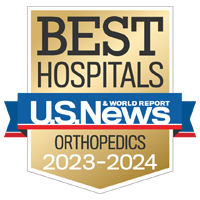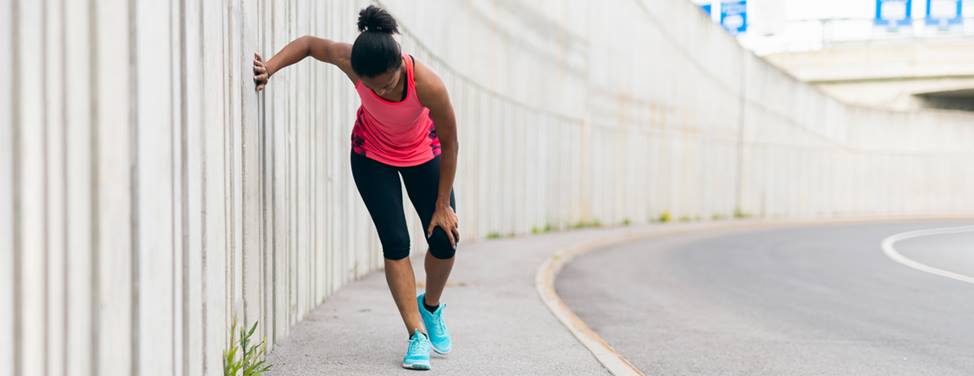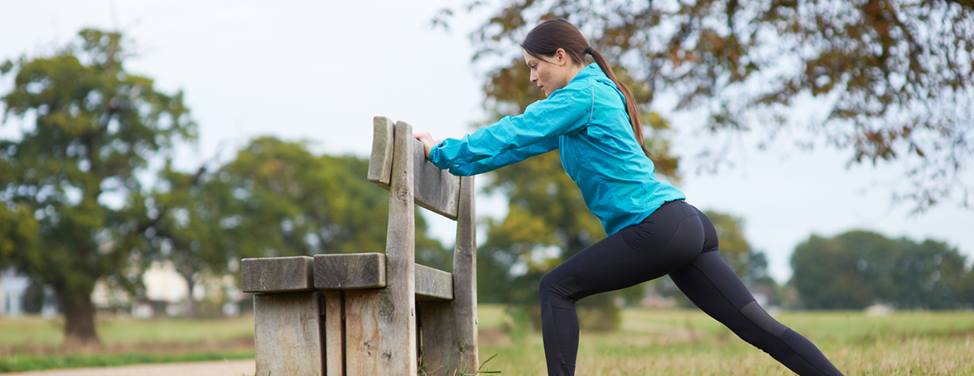MCL Tear

Overview
The medial collateral ligament, or MCL, is a broad, thick band that runs down the inner part of the knee, from the femur (thighbone) to a point 1.5 to 2 inches from the top of the tibia (shinbone). The MCL functions primarily to prevent the leg from extending too far inward, but it's also part of the mechanism that stabilizes the knee and allows it to rotate.
MCL injuries commonly occur when such a strong force hits the outside of the knee that it causes the MCL – and possibly other knee ligaments, such as the anterior cruciate ligament (ACL) – to stretch or tear.
This happens to people playing certain sports – in football, for example, when one player collides with another from the side. MCL injuries are also common in sports that require quick stops and turns, such as soccer, basketball and skiing. However, not everyone who damages this ligament is an athlete. Simply slipping on ice, if the lower leg splays out, can injure the MCL, as can repetitive smaller injuries that gradually cause the MCL to lose its normal elasticity and become limp, like a worn-out rubber band.
Our approach to MCL tears
UCSF is committed to helping patients with MCL tears return to the highest level of activity possible, whether that means a daily walk or reporting for practice with the NFL. Our team includes orthopedic surgeons, primary care sports medicine doctors, physical therapists and athletic trainers. These specialists work together to tailor a treatment plan to each patient's needs and goals.
Most MCL injuries can be healed through physical therapy. We offer the full range of these treatments, including exercise regimens, functional activity training and neuromuscular reeducation (techniques that condition the area to move normally again). Our specialists guide each patient through a personalized program designed to facilitate healing, recover function and improve physical performance.
Awards & recognition
-

Among the top hospitals in the nation
-

One of the nation's best for orthopedic care
Signs & symptoms
An MCL tear produces symptoms along the inner side of the knee (toward the midline of the body). Initially, you may experience:
- A pop on the inside of the leg
- Tenderness or pain that ranges from mild to severe
- Stiffness
- Swelling
- Unsteadiness, locking or catching in the joint
Diagnosis
Your doctor will likely ask how you injured your knee, how it has felt since the injury and whether you've injured it before. An exam will include checking for pain or tenderness along the inside of the knee and checking the integrity of your MCL by exerting pressure on the outside of your knee while your leg is both bent and straight.
Depending on the degree of pain or looseness of your knee joint, the injury will be classified as one of three grades:
- Grade 1. There's some tenderness and minor pain at the point of injury.
- Grade 2. There's noticeable looseness in the knee ("opening up" approximately 5 millimeters when manipulated), major pain and tenderness at the inside of the knee, and (in some cases) swelling.
- Grade 3. There's considerable pain and tenderness at the inside of the knee, along with some swelling and marked joint instability (the knee opens up approximately 10 millimeters when manipulated). A grade 3 MCL tear often occurs in conjunction with an ACL tear or, more rarely, with a tear in the posterior cruciate ligament (PCL).
- X-ray. This can show other damage and bone injury.
- Magnetic resonance imaging (MRI). This test is 90 percent accurate for diagnosing MCL injuries and may be ordered if the physical exam findings are unclear or if your doctor suspects other injuries.
- Stress X-ray. This test is similar to a regular X-ray, except the doctor or technician holds the knee open from the side so that any widening of the joint space will be evident on the image.
In some cases, the immediate pain and swelling interfere with the doctor's ability to accurately gauge the injury's severity. If this is your situation, you may be asked to wear a light brace, apply ice and elevate your knee; in time, the swelling and pain will lessen enough to allow diagnosis.
In addition, your doctor may order the following tests:
Treatments
Nonsurgical methods
Recovery time for an MCL injury depends on the severity of the damage. On average, these injuries take six weeks to heal. No matter the grade of the tear, initial treatment focuses on immobilizing the knee and reducing pain and inflammation. Measures include:
- Resting, icing and elevating the knee
- Taking oral medications that relieve pain and inflammation, such as aspirin and ibuprofen
- Wearing a brace that allows the knee to bend while restricting side-to-side movement
Some knee braces are designed to prevent bending. In that case, you'll need to modify your activities so that you don't have to squat, kneel down or bend over. Try to keep your leg elevated, even when you're sitting, to bring down the swelling.
Once the pain and swelling subside, you'll begin a physical therapy program, which will include exercises to restore strength and normal range of motion. If your knee feels sore while doing these exercises, proceed slowly to prevent further irritation and consult your physical therapist.
Depending on the injury's severity, these methods – a period of rest, bracing and physical therapy – usually suffice to heal the tear. However, if the torn ligament doesn't heal sufficiently, you may experience instability and be more susceptible to reinjury. Surgery may be required in rare cases.
Once the MCL has fully healed, you should have minimal long-term effects, provided your knee suffered no other damage.
As previously noted, recovery times vary widely, but in general:
- A grade 1 (minor) MCL tear can take from a few days to a week and a half to heal enough for a return to normal activities, including sports.
- A grade 2 tear can take from two to four weeks to heal.
- A grade 3 tear usually takes four to eight weeks to heal, unless the ACL is also damaged, in which case recovery may take longer.
Surgical methods
While most MCL injuries can resolve without surgery, there are instances where surgery is the best treatment option. The surgery will either repair or reconstruct the MCL. To repair the ligament, your surgeon will make an incision at the torn area and use fixation devices called suture anchors to secure the ligament back to the bone. To reconstruct the ligament, your surgeon will use tendons from either your knee or a cadaver knee.
With either surgery, you can probably return home the same day. After surgery, you'll use crutches and a knee brace for about six weeks. At a post-op visit one to two weeks after surgery, your doctor will check your knee and remove the stitches. Recovery time depends on any related knee injuries but is generally between nine and 12 months.
Frequently asked questions
- When can I shower after surgery?
You should keep your dressing on and knee dry until your first post-op visit, at which point you'll likely be cleared to shower. But don't submerge your knee in a bathtub or swimming pool until three to four weeks have passed since your surgery.
- Will I have stitches?
You'll have stitches along the inside of the knee. They'll be covered by a bandage and removed at your first post-op appointment, one to two weeks after surgery.
- When should I expect a follow-up appointment?
You'll have a scheduled visit one to two weeks after surgery. It will include a knee exam, suture removal and X-rays.
- When should I start physical therapy?
You should start as soon as possible after surgery. Patients generally begin a program within the first one to two weeks, often right after the first post-op appointment.
- How long will I be on crutches?
Most likely, you'll use crutches for about six weeks, depending on which other structures were repaired in your knee.
- Are cold therapy machines best for pain relief?
Simple icing methods, such as placing a regular ice pack or a package of frozen vegetables on your knee (on top of the bandages) work well. Cold therapy units, which work by recirculating ice water through a pad over your knee, are also effective, though somewhat expensive.
- When can I return to school or work after MCL surgery?
Most patients return to school or desk work five to seven days after surgery. If you're able to work from home, your initial recovery may be easier. If you have a physically demanding job, you may need more time for a safe recovery and medical clearance before returning to work.
- When can I drive after MCL surgery?
That depends on which leg had surgery. If it was your left knee and you drive an automatic car, you can get behind the wheel once you're no longer taking narcotic pain medication and feel capable of driving safely. If it was your right knee, you'll probably need to wait six weeks; your surgeon can advise you.
UCSF Health medical specialists have reviewed this information. It is for educational purposes only and is not intended to replace the advice of your doctor or other health care provider. We encourage you to discuss any questions or concerns you may have with your provider.











